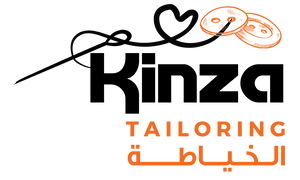What Is a Tailor? A Comprehensive Guide to the Art of Tailoring
Tailoring is a timeless craft that combines artistry, precision, and functionality. From bespoke suits to everyday alterations, tailors play a crucial role in the fashion industry and in our daily lives. This article delves into the world of tailoring, exploring its history, responsibilities, skills required, and its relevance in today's fashion landscape.
Understanding the Role of a Tailor
A tailor is a skilled professional who designs, alters, and repairs garments to fit individual clients. They work with various fabrics and materials, using techniques such as sewing, cutting, and fitting to create custom-fitted clothing. Tailors may specialize in specific types of clothing, such as suits, dresses, or outerwear, and often work in settings like high-end boutiques, department stores, or private studios. if you want get best ladies tailor abu dhabi so visit us
Historical Background of Tailoring
The profession of tailoring has a rich history, dating back to ancient times. In medieval Europe, tailoring became a formalized trade with the establishment of guilds, which regulated the profession and maintained quality standards. Tailors' guilds instituted a system of masters, journeymen, and apprentices, ensuring the transmission of skills and knowledge through generations.
One notable historical figure is Juan de Alcega, a Spanish tailor who published "Libro de Geometría, Practica, y Traça" in 1580. This book documented methods of laying out patterns to achieve the most economical use of fabric and illustrated 163 patterns to scale in 23 categories of men's and women's garments.
Key Responsibilities of a Tailor
Tailors are responsible for a variety of tasks that ensure garments fit perfectly and meet clients' expectations. Their duties include:careerexplorer.com
-
Taking Measurements: Accurately measuring clients to ensure proper fit.
-
Altering Garments: Modifying clothing to improve comfort and fit, such as shortening sleeves or adjusting seams.
-
Repairing Garments: Fixing issues like tears, holes, or broken zippers.
-
Constructing Garments: Creating custom clothing based on clients' specifications.
-
Consulting with Clients: Discussing design, alteration, or repair requirements to meet clients' needs
These responsibilities require a keen eye for detail and a deep understanding of garment construction.
Essential Skills and Qualifications
To excel as a tailor, one must possess a combination of technical skills and personal attributes:
-
Sewing Proficiency: Expertise in both hand-sewing and machine-sewing techniques
-
Fabric Knowledge: Understanding different types of fabrics and how they behave.
-
Attention to Detail: Ensuring precision in measurements and stitching.
-
Customer Service: Effectively communicating with clients to understand their needs.
-
Problem-Solving: Addressing fitting issues and making necessary adjustments.
While formal education is not always required, many tailors undergo apprenticeships or attend vocational schools to hone their craft
Types of Tailoring
Tailoring encompasses various specializations, each catering to different client needs:
Bespoke Tailoring
Bespoke tailoring involves creating garments entirely from scratch, tailored to the client's specifications and measurements. This personalized approach ensures a perfect fit and allows for customization in fabric choice, style, and detailing.
Made-to-Measure
Made-to-measure tailoring uses standard patterns that are adjusted to fit the client's measurements. While not as personalized as bespoke, it offers a balance between customization and cost-effectiveness.
Alterations and Repairs
Tailors also provide services to modify existing garments, such as hemming pants, shortening sleeves, or repairing tears. These services are essential for maintaining and extending the life of clothing.
The Tailoring Process
Creating or altering a garment involves several steps:
-
Consultation: Discuss the client's needs, preferences, and budget.
-
Measurement: Taking precise measurements to ensure a proper fit.
-
Pattern Making: Drafting a pattern based on measurements and design specifications
-
Fabric Cutting: Cutting the fabric according to the pattern
-
Sewing: Assembling the garment using appropriate sewing techniques.
-
Fitting: Having the client try on the garment to assess fit and make necessary adjustments.
-
Finishing: Adding final touches, such as buttons or hems, and pressing the garment for a polished look.
This meticulous process ensures that the final product meets the client's expectations in both fit and style.
Tools of the Trade
Tailors rely on a variety of tools to perform their work effectively:
-
Measuring Tape: For taking accurate body measurements.
-
Scissors and Shears: For cutting fabric and threads.
-
Sewing Machines: For assembling garments efficiently.
-
Needles and Threads: For hand-sewing and detailed work.
-
Pressing Equipment: Such as irons and pressing boards to finish garments.
Mastery of these tools is essential for producing high-quality garments.
Tailoring in the Modern Fashion Industry
Despite the rise of mass-produced clothing, tailoring remains significant in the fashion industry. Custom-fitted garments offer a level of personalization and quality that off-the-rack clothing often lacks. Tailors contribute to sustainable fashion by repairing and altering garments, reducing waste and promoting longevity in clothing.
Moreover, tailoring services are in demand for special occasions, such as weddings and formal events, where a perfect fit is paramount. The profession continues to evolve, embracing new technologies and adapting to changing fashion landscapes.
Career Opportunities and Outlook
Tailoring offers various career paths, including:
-
Independent Tailor: Operating a personal tailoring business or boutique
-
In-House Tailor: Working for fashion houses, department stores, or clothing manufacturers.
-
Specialized Tailor: Focusing on specific garments, such as bridal wear or men's suits.
The demand for skilled tailors persists, especially in markets that value bespoke and high-quality clothing. As consumers become more conscious of fit and sustainability, the tailoring profession is poised for continued relevance.
Conclusion
Tailoring is a craft that blends technical skill with artistic expression. Tailors play an indispensable role in fashion, providing customized solutions that enhance comfort, style, and individuality. Whether altering a cherished garment or crafting a bespoke suit, tailors ensure that clothing not only fits but also reflects the wearer's personality and needs. As the fashion industry continues to evolve, the timeless art of tailoring remains a cornerstone of personal style and sustainable practices.


